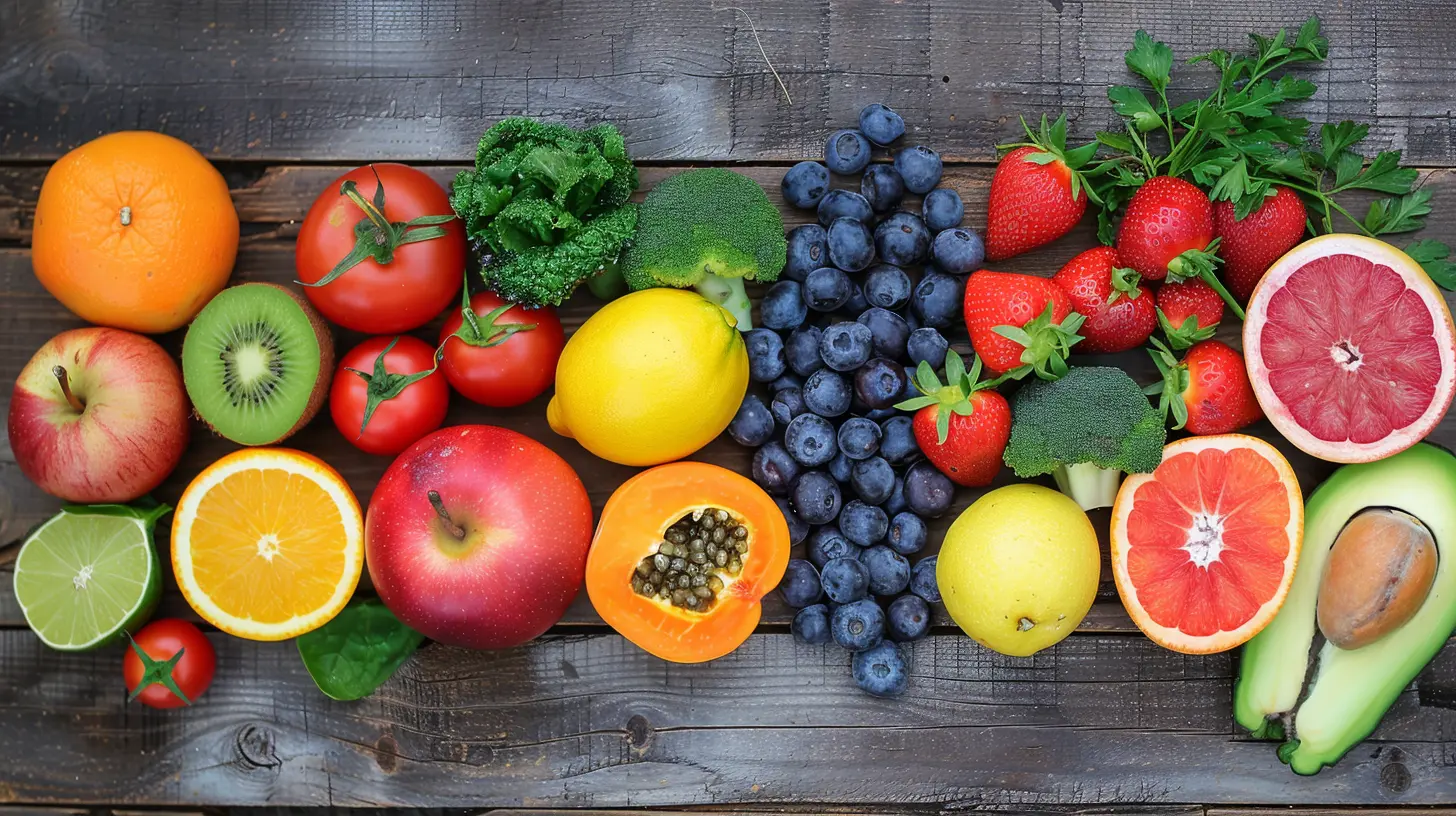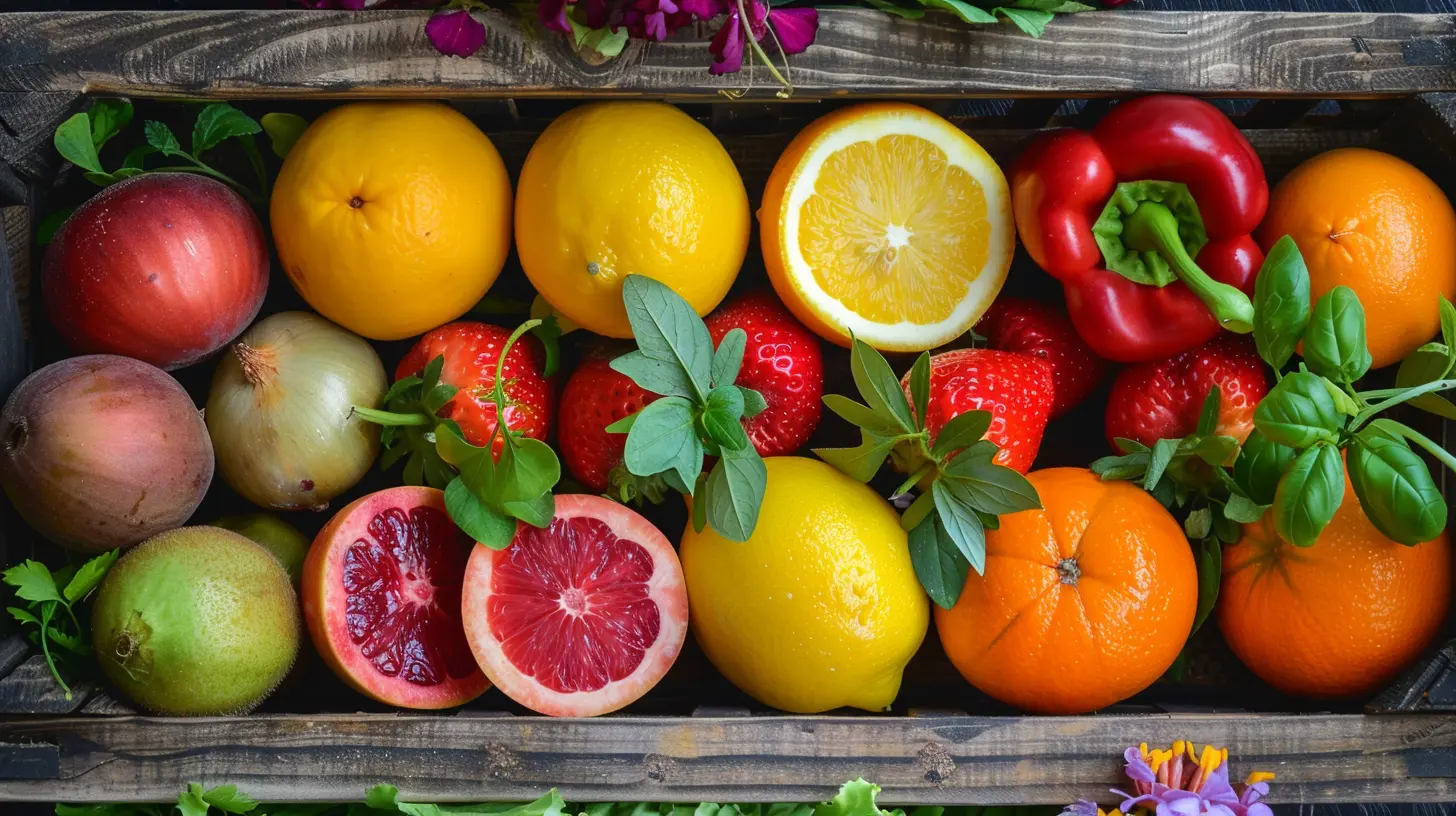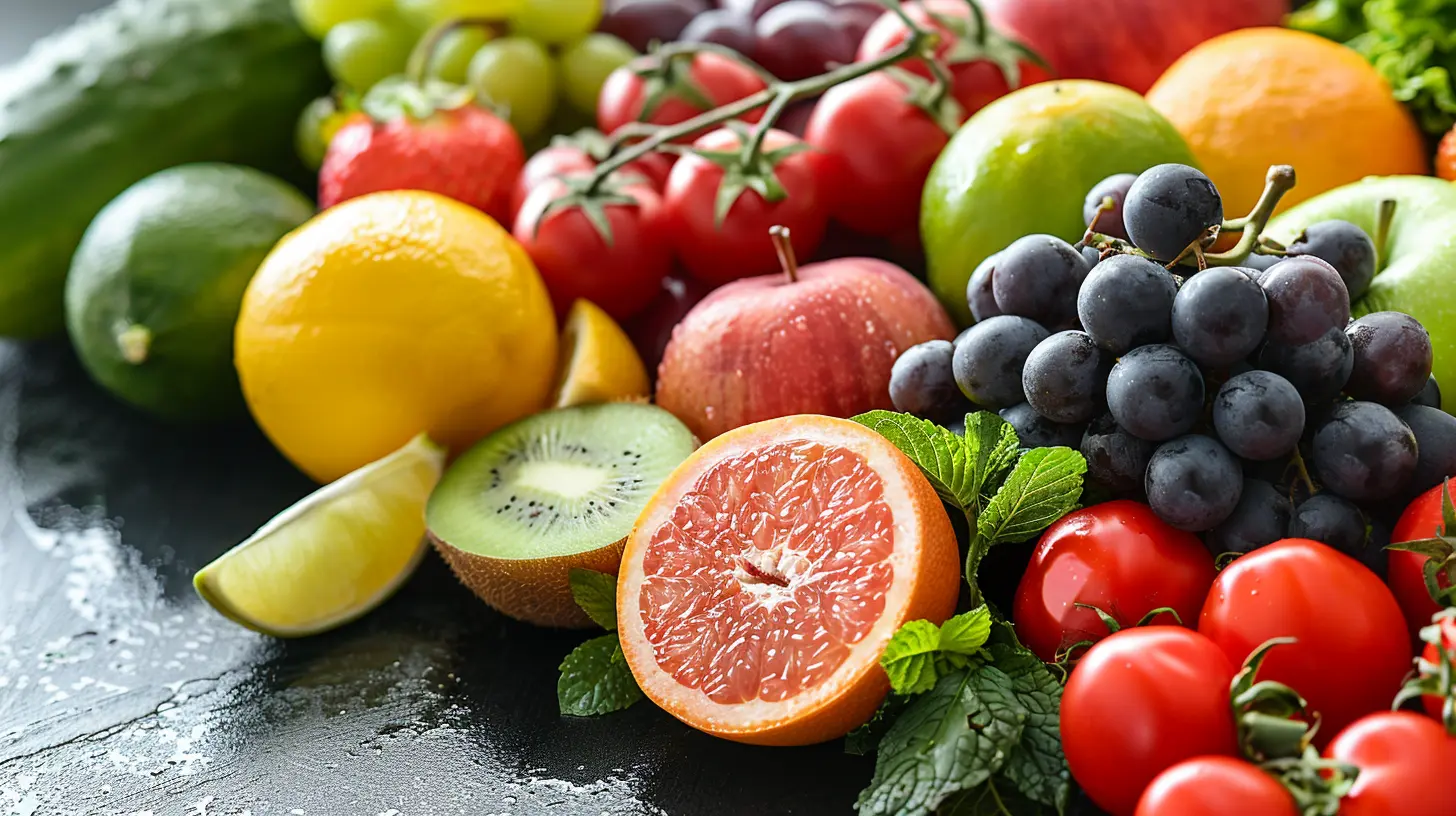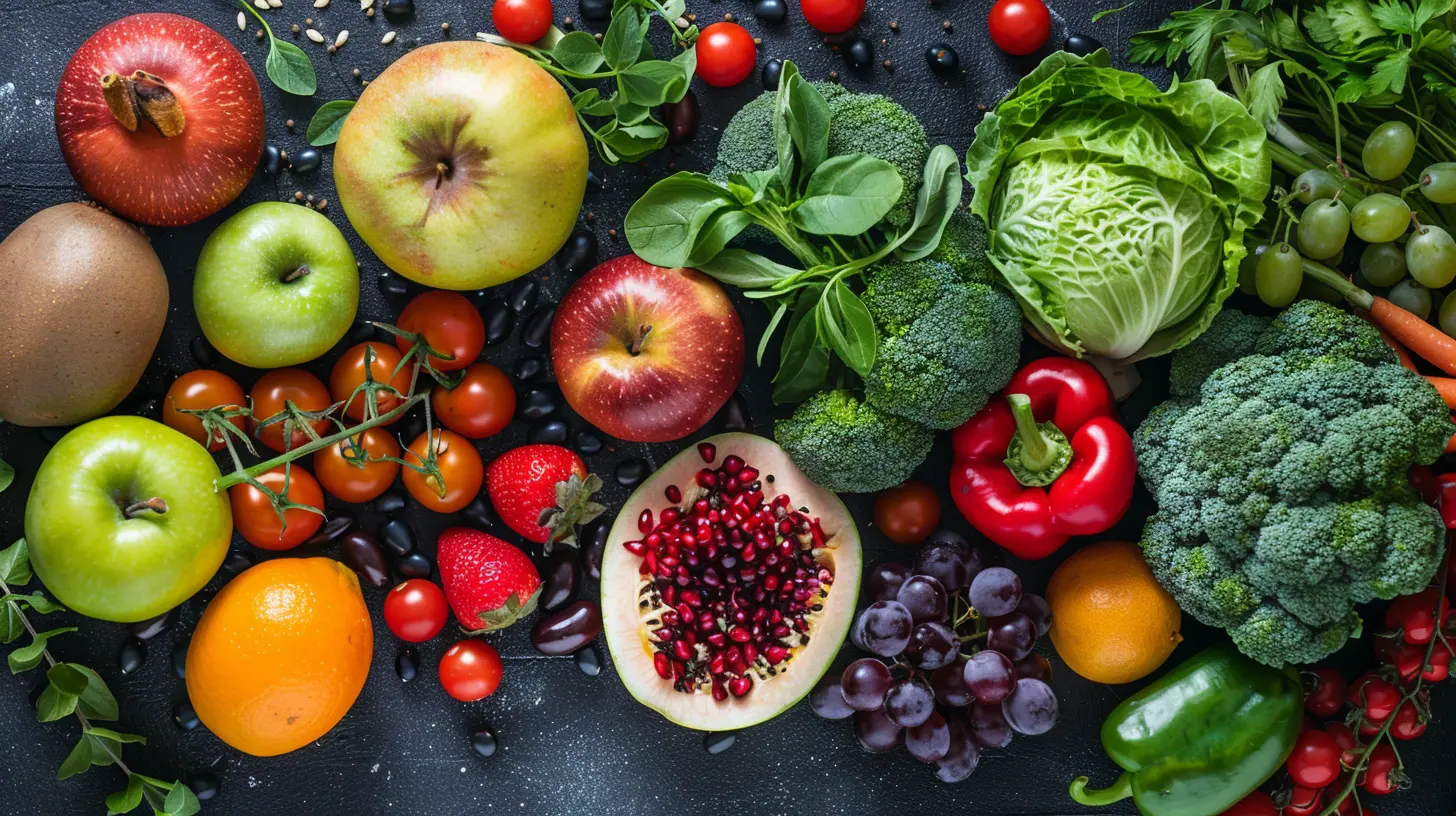Plant-Power: Incorporating More Fruits and Veggies into Your Diet
8 September 2025
Let’s get real for a minute—most of us know we should eat more fruits and vegetables. But between hectic schedules, tempting junk food, and those infamous “I’ll start Monday” promises, that rainbow-colored plate often turns into fast food wrappers and frozen meals. If any of this sounds familiar, take a deep breath, you're not alone. And here's some good news—incorporating more plant-based goodness into your everyday meals doesn’t have to be a full-on lifestyle overhaul.
In fact, with a few clever tricks and a dash of intention, you could be well on your way to a healthier (maybe even happier) you. Let’s dive into how you can power up with plants—no bland salads or veggie guilt necessary.
Why Plant-Power Matters: More Than Just Rabbit Food
Imagine giving your body the fuel it actually craves—kind of like using rocket fuel instead of regular gas. That’s what fruits and vegetables do. They’re packed with essential vitamins, minerals, antioxidants, fiber, and water—all of which your body uses to function at its best.These colorful superfoods help:
- Lower cholesterol
- Stabilize blood sugar
- Improve digestion
- Support heart health
- Boost immunity
- Even improve skin health
Not too shabby, right?
And get this—numerous studies have shown diets rich in fruits and veggies reduce the risk of chronic diseases like heart disease, diabetes, and some cancers. Vegetables are like nature’s multivitamin, but tastier and crunchier.
Busting the Myth: Eating More Plants Isn’t All or Nothing
Let’s squash a common misconception: going plant-powered doesn’t mean giving up meat entirely or living off smoothies and kale. You don’t have to go full-on vegan unless that’s your vibe. What we’re talking about here is incorporating more fruits and veggies into your current diet.Think of it as leveling up—like adding cheat codes for better energy, sleep, and digestion.
No judgment, no pressure—just simple swaps and small wins that snowball into bigger results over time.
The Color Code: Eat the Rainbow
Ever noticed how the healthiest meals are usually the most colorful? It’s not just for Instagram. Each color in fruits and veggies represents different nutrients:- Red (like tomatoes, strawberries, red peppers): Packed with antioxidants like lycopene and vitamin C
- Orange/Yellow (carrots, mangoes, sweet potatoes): Rich in beta-carotene and vitamin A for eye health
- Green (spinach, broccoli, kiwi): Loaded with fiber, folate, iron, and calcium
- Blue/Purple (blueberries, eggplant, grapes): Full of anthocyanins that support brain and heart health
- White/Brown (mushrooms, onions, garlic): Provide anti-inflammatory and immune-boosting properties
So, next time you’re building your plate, aim for a mix of colors—it’s like Mother Nature’s version of eating Skittles.
Simple Ways to Sneak in More Fruits and Veggies
Let’s be honest—if it takes more than 10 minutes or a trip to a specialty store, most of us bail. So here are easy, real-life ways to sneak more produce into your day without flipping your lifestyle upside down.1. Start Your Day with a Plant-Powered Punch
- Smoothies: Toss in a banana, handful of spinach, frozen berries, and almond milk. Boom—you just ate two servings of plants before 9 a.m.- Avocado toast: Upgrade your morning toast with avocado, tomato slices, and a sprinkle of pumpkin seeds.
- Oatmeal toppers: Add diced apples, berries, raisins, or mashed bananas to your oats. Don’t forget cinnamon—it’s the secret weapon.
2. Upgrade Your Snacks
Snack time doesn’t have to be chips and candy. Keep it simple:- Sliced cucumbers and baby carrots with hummus
- Apple slices with almond butter
- Celery sticks with cream cheese and raisins (hello, childhood!)
- Roasted chickpeas for a salty crunch
3. Veggie-Up Your Meals
Make veggies the MVP of your plate:- Pasta: Add spinach, mushrooms, sundried tomatoes, or zucchini to your sauce.
- Tacos: Load up with shredded cabbage, grilled peppers, corn, and avocado.
- Burgers: Swap beef patties for veggie patties or just add lettuce, tomato, and sautéed mushrooms.
- Soups & Stews: Toss in peas, carrots, kale—whatever’s in your fridge.
4. Bake ‘Em In
Yep, you can bake veggies into sweet treats (your kids won't even notice):- Zucchini or carrot muffins
- Mashed bananas in pancakes or waffles
- Sweet potato brownies (yes, they’re a thing and they’re delicious)
5. Try Meatless Mondays
Dedicating just one day a week to plant-based meals is an easy way to experiment with new recipes. You might find yourself asking, “Why didn’t I try lentil chili sooner?”A Week’s Worth of Easy Veggie-Packed Meal Ideas
Feeling stuck on what to actually make? Here’s a simple menu to get those creative plant juices flowing:- Monday: Chickpea curry over brown rice + cucumber salad
- Tuesday: Veggie stir-fry with tofu and quinoa
- Wednesday: Black bean tacos with avocado and shredded purple cabbage
- Thursday: Whole wheat pasta with spinach, tomatoes, and olive oil
- Friday: Homemade veggie pizza with bell peppers, mushrooms, and spinach
- Saturday: Buddha bowl with roasted sweet potatoes, chickpeas, kale, and tahini dressing
- Sunday: Grilled veggie skewers with wild rice and watermelon salad
See? Nothing fancy, nothing complicated—just real food that fuels real life.
How Much Is Enough?
Here’s the million-dollar question: How much produce do we actually need?According to health guidelines, adults should aim for 5 to 9 servings per day. That might sound like a lot, but let’s break it down:
- 1 small piece of fruit = 1 serving
- ½ cup cooked veggies = 1 serving
- 1 cup leafy greens = 1 serving
- ¾ cup fruit juice (100% juice) = 1 serving (but whole fruits are better)
Spread throughout your meals, it’s actually more doable than you think.
Tips to Make It Stick (No More Falling Off the Wagon)
We’ve all been on that health kick rollercoaster: one minute we’re meal-prepping with quinoa and kale, the next minute we’re elbow-deep in a bag of Doritos. Want to make this plant-powered shift stick long-term? Try these tips:1. Don’t Aim for Perfection
Nobody’s perfect. If you eat a donut at breakfast, you haven’t failed. Add a banana to it. That’s still a win.2. Keep Fruits and Veggies Visible
Out of sight, out of mind. Keep a fruit bowl on the counter or pre-cut veggies in clear containers at eye level in the fridge.3. Batch Cook Your Veggies
Roast a huge tray of veggies at the start of the week—think carrots, broccoli, sweet potatoes, and bell peppers. Add them to meals throughout the week as sides or toppings.4. Try One New Thing a Week
Whether it’s a funky-looking veggie from the farmer’s market or a Pinterest recipe that caught your eye, experimenting keeps things fun and fresh.5. Involve the Fam
Kids and partners are more likely to try new veggies if they help cook them. Heck, even adults love feeling like chefs once in a while.What If I Don’t Like Vegetables?
That’s okay! Sometimes it's about how they’re prepared. Roasted carrots taste totally different from raw ones. Kale sautéed with garlic? Way better than steamed. You don’t have to love them all—start with the ones you do like and branch out slowly.Play with textures, spices, and cooking methods. Think of it like dating—you might have to try a few before you find “the one.”
Final Thoughts: Your Plant-Powered Future Starts Now
Incorporating more fruits and veggies isn’t about transformation. It’s about enhancement. You’re adding color, crunch, flavor, and life to your meals. You’re giving your body what it needs to thrive—without restrictions, without guilt.Start small. Maybe it’s a smoothie tomorrow morning, or an extra veggie on your sandwich. Before long, those tiny tweaks will blossom into habits. And just like that, you’re living the plant-powered life—with energy to spare and a plate that’s always vibrant.
So next time you’re at the grocery store, grab that bunch of kale or box of strawberries…and give your body a high-five while you’re at it.
all images in this post were generated using AI tools
Category:
Healthy EatingAuthor:

Eileen Wood
Discussion
rate this article
1 comments
Vesperos Ross
Great tips! Excited to boost my plant intake!
September 26, 2025 at 4:57 PM

Eileen Wood
Thank you! I'm glad you found the tips helpful—enjoy your plant-powered journey! 🌱🍏


